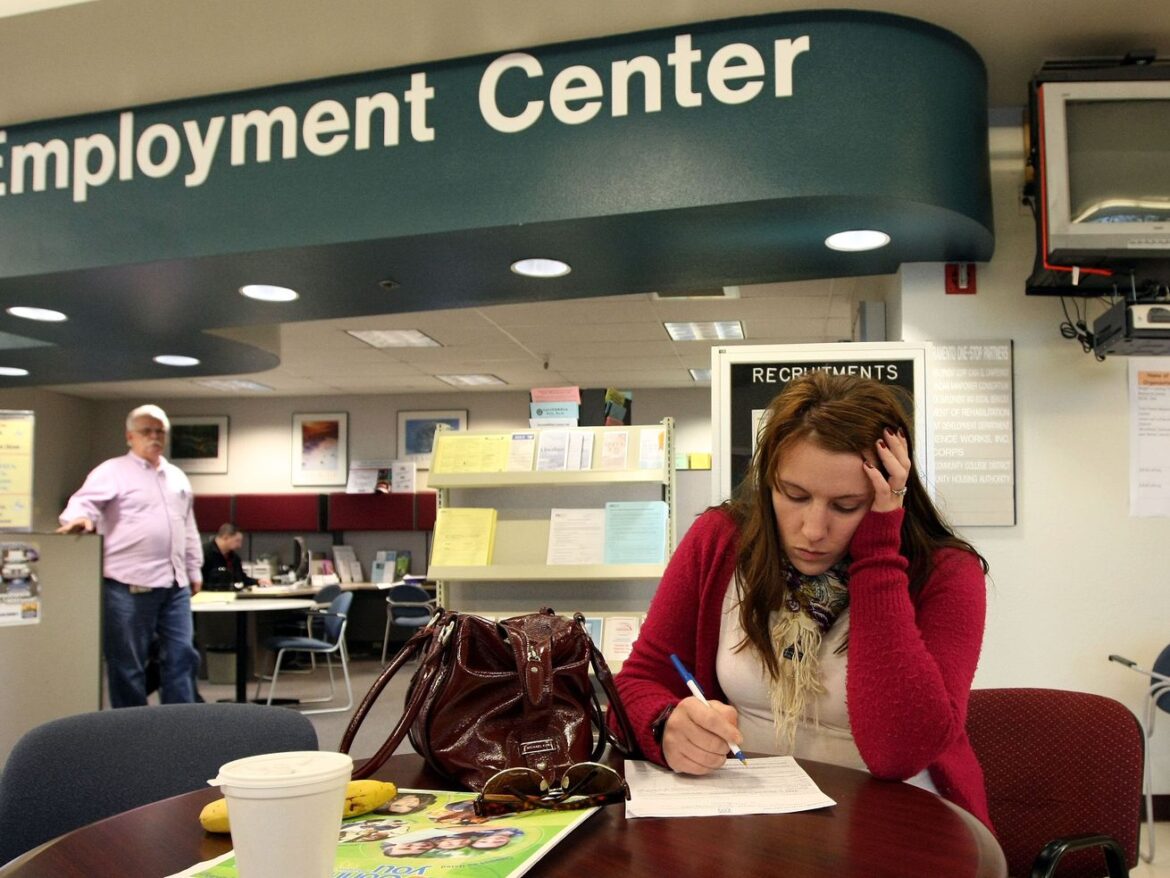A new experiment suggests that “navigators” could make accessing government services much easier.
When one thinks about America’s housing system, the phrase “easy to use” does not ordinarily come to mind. Buying a house or even just leasing an apartment usually requires thousands in upfront costs, application fees, credit checks, and more. And if you’re applying for affordable housing, the situation is worse. Cities often make applicants jump through ridiculous hoops to even apply for a scarce number of affordable units. In Washington, DC, applicants have to complete an orientation course and then manually enter individual lotteries for each home they’re applying for.
Recipients of housing choice vouchers (better known as “Section 8” vouchers after the portion of a 1937 federal law authorizing them) have it worst of all. Not only do landlords often discriminate against them, but local housing authorities are underfunded and, once on a waitlist, applicants wait years on average to actually get a voucher. Many housing authorities have closed their waitlists, so if you suddenly hit hard times and need assistance, you’re out of luck. You literally cannot apply.
But a collaboration between a team of social scientists and two housing authorities in Seattle suggests things don’t have to be this bleak. The program, called Creating Moves to Opportunity (CMTO), seeks to help Section 8 recipients in the Seattle area find housing in areas where children grow up to make high incomes.
Some of these researchers had earlier found that opportunity (measured as the share of poor kids who wind up in a higher income bracket as adults) varied widely not just from city to city, but from city block to city block. Their hope was to direct recipients to the blocks whose children have historically prospered as adults.
The first results from the initiative came out in 2019 — you can read a story I wrote about it then. Results were promising: The program dramatically increased the share of voucher recipients who moved to high-opportunity neighborhoods. Now, the researchers have come out with new results, and with several years of data, they not only confirm that the program spurs moves to high-opportunity zones, but they explain why it works.
The short answer: navigators. CMTO did not simply give voucher recipients information about high-opportunity neighborhoods and then leave them to their own devices. It paired them with “housing navigators,” professional administrators who could help them navigate applying for units and talk to landlords to help leases go through. The help made an enormous difference — for the most recent paper, the researchers experimented with giving some applicants only information and others a fuller package. The group without help was much less likely to move to a high-opportunity neighborhood.
Raj Chetty, William A. Ackman professor of economics at Harvard and one of the researchers driving this project, told me that standard economic theory wouldn’t predict navigators making this much of a difference. It makes sense that simply getting information would change people’s behaviors, but it’s less clear why having a guide would. Standard economic models assume people act rationally given the information they have, and it seems like learning that a certain neighborhood produces good outcomes for their children should be enough. You shouldn’t need more than the information.
For non-economists, though, this conclusion seems quite intuitive. Seattle voucher recipients got good customer service from a government agency — and just as it does nearly everywhere else, that turned out to matter a great deal.
How you create moves to opportunities
The navigators at the center of the intervention come in two flavors: family navigators, who work with Section 8 families to help in their housing search; and housing navigators, who meet with landlords in high-opportunity neighborhoods and dispel any negative impressions they might have about the Section 8 program and about tenants who might have criminal records or poor credit. Both are contracted through a local nonprofit, the Interim Community Development Association.
Nikkie Manlapaz, a working mom who found a home through this program, told me back in 2019 that the navigators were absolutely essential. She said that in previous housing searches, she relied on “what I heard from friends and on Craigslist. I tried Apartments.com, but it was just basically calling the places on your own, looking at the places on your own, applying and just waiting, and usually the answer’s no.” Thanks to Section 8, she already had the money. But what she needed was an easier process.
Manlapaz said that after she told her navigator she wanted to live in the Northgate, an opportunity neighborhood in northern Seattle, her navigator called to tell her about any vacancies. When she picked one she liked, “they pretty much took care of the rest. I gave them my information, they gave my information to the leasing office, they applied for me, and they helped with the first month’s rent and the renter’s insurance for a year.” In some ways, this is what wealthy people get when they pay for rental brokers or elite real estate agents, whose fees might be high but who can remove some drudgery and uncertainty from the process.
What we’ve learned since 2019 is that this kind of navigation is exactly why the program works. As part of the follow-up study, the authors (Chetty, Peter Bergman, Stefanie DeLuca, Nathaniel Hendren, Lawrence Katz, and Christopher Palmer) split the experiment into three arms, testing three different programs.
One group only got information about high-opportunity areas and some short-term financial assistance to help them move; this is the “light” intervention group. The “medium” group got some limited support from navigators, plus information and financial backing. The “heavy” intervention group got the full navigator experience. A control group received a voucher and no additional information or financial support.
The results were unequivocal: Families getting the heavy treatment were vastly more likely to move to a high-opportunity area. In the control group, which got no information or assistance, 12.5 percent of families moved to high-opportunity areas. The light intervention increased that share by 8.9 percentage points, but this change wasn’t statistically significant. The medium intervention increased the share moving to a high-opportunity neighborhood to 26.3 percent, a more-than doubling, enough to be statistically significant.
But the full treatment increased the share to 53.3 percent — most participants were now moving to high-opportunity areas. It was by far the most effective form of intervention.
It was also the most expensive, but even so it hardly breaks the bank: it cost $3,060 per family, compared to $1,001 for the medium intervention and $705 for the light one. Chetty notes that this doesn’t include the fact that some high-opportunity neighborhoods had costlier rents, which meant Section 8’s monthly subsidy costs increased. Over the average life of a voucher (seven years), the program cost and additional rent costs add up to a 17.2 percent increase in the voucher’s total cost for the housing authority.
Not every housing authority would have to pay that much, though. “There are plenty of opportunity bargains, [neighborhoods] that are not more expensive, where we think kids would do equally as well,” Chetty says. It’s possible that a housing authority could decline to increase subsidies for high-cost areas, wind up only paying $3,060 per family, and still be able to place lots of families in these “bargain” areas.
Either way, the money seems more than worth it. An earlier paper by Chetty, Hendren, and Katz, analyzing a large-scale experiment run by the Department of Housing and Urban Development in the 1990s, found that children living in voucher housing who were placed in low-poverty neighborhoods by the experiment saw their earnings rise by 31 percent in their mid-20s, relative to recipients who didn’t move. That’s a huge payoff, and easily adds up to more than $3,000 per person in benefits. College attendance is higher, and single parenthood less common, among adults whose families received the voucher; they’re likelier to live in low-poverty neighborhoods as adults too.
I’ve been waiting for a guide to come and take me by the hand
After the 2019 paper, Chetty says, some of his peers in economics were dismissive of the results. But, he notes, “that turns out not to be what’s going on. If you give people information, and even cash, that doesn’t do it.” What does do it is the navigators: an actual hands-on process helping people navigate the frictions of applying for housing.
If that explanation is foreign to some economists modeling rational actors, it’s totally familiar in sociology, where it’s de rigueur to note that people’s behavior is shaped by stigma, institutional behaviors and attitudes, and their own bandwidth for making decisions. Stefanie DeLuca at Johns Hopkins, a prominent sociologist, is a co-author on the new paper and leads a team of 50 interviewers who wound up talking to 119 different families who were part of the experiment. The hope was to give some qualitative sense of what the program was like for participants: what it helped with, what limitations it had.
“The opening invitation to the interviews is ‘tell me the story of your life,’ and then eventually we move to the phase where they sign up for CMTO and we say ‘tell me about CMTO,’” DeLuca explains. “What was jumping out from that initial question,” she recalls, was “the emotional communication aspect of it. Families were feeling really relieved, supported, optimistic, more confident.”
Many participants, she recalled, reported “experiences that make them quite pessimistic” with housing in the past. In the paper, she quotes a member of the control group, Arya, who bemoans that during her most recent visit to a prospective apartment, she couldn’t even “get somebody to meet me there that might just sit there with me … to explain the paperwork.” By comparison, Tina, a mom who did receive CMTO help, reported, “Wow, this program, like they’re with you at all times, they help you, they’re there to guide you.”
The navigators’ work was wide-ranging. They could act as emotional support, reassuring applicants that the process was going well and they’d succeed in finding a place. They could act as coaches, helping applicants put together “rental resumés” to win over landlords. They often served as intermediaries who could handle tricky or testy communications with landlords.
Honestly, the best comparison that comes through in the paper is to a concierge at a hotel. The navigators offered similarly comprehensive help to their clients, the kind of help that government rarely extends to citizens. And that, ultimately, was the most powerful part of the intervention for getting people to lease in high-opportunity areas, the main goal the whole time.
It’s a lesson that could have surprisingly far-reaching implications. There aren’t concierges for most government services. If you’re struggling, programs like food stamps/SNAP and Medicaid often enroll you online with no actual person helping out. State human services departments are usually understaffed and ill-equipped to walk people through applications, support them on job searches, and generally “navigate” through the process the way the Seattle navigators did. We spend a whole lot of money on social programs, but they don’t do as much as they could because of the difficulty of access. One in five people eligible for food stamps doesn’t get them, and in a number of states like California and North Carolina, 30 percent don’t get them. Some of that is due to the difficulty of signing up and maintaining benefits.
The CMTO results suggest that a concierge model might be worth trying on programs like these as well. People need monetary support, of course. But sometimes they need emotional and logistical support too.



